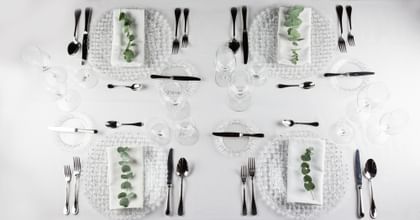Perfect Table Setting
Discover how to Prepare the Perfect Table Setting for any Occasion

Whether you’re setting the table for a casual meal or a formal occasion, we’re here to guide you and help you to put on a show for your guests. And it isn't just for show; getting your table setting right can make a huge difference to the enjoyment of everyone’s evening, and that applies to casual dinners as much as it does to special occasions.
The benefits of setting your table correctly
It helps to shape the feeling of the occasion. The atmosphere during a romantic meal for your partner on your anniversary will be different from a casual lunch, and your tableware should reflect this. Depending on how you set your table, it can add to whatever atmosphere and feeling you’re trying to create, be it a fun one, a sophisticated one, or even a romantic one.
It lets guests know that you value them enough to put in a little extra effort. If you were trying to impress someone with your cooking, we’re sure you’d take steps like ensuring you marinate the meat to make it flavorful, instead of serving it up completely unseasoned. Likewise, taking the time to set a table up properly for guests helps them to feel valued as you’ve put that extra bit of effort into your presentation.
It influences how the meal comes across. Studies have found that people perceive well-presented food and drink as better tasting than less attractive cuisine, and your table setting also plays a part in affecting this. So, it’s a nice, straightforward way of helping your guests to enjoy their food that much more!
Now we’ve established why it’s important to set your table correctly, here’s how you can go about achieving it to leave your guests impressed every time. Let’s start with the fundamentals that a table setting involves, before going onto how you can put it all together.
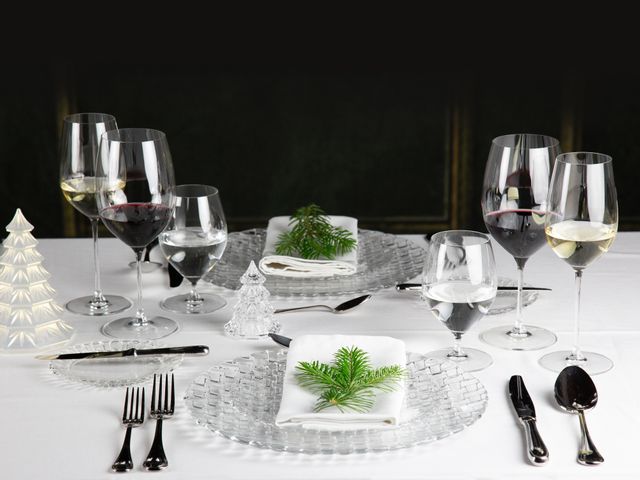
Typical items to include in a table setting
Any basic table setting will include:
- A dinner plate
- A dinner fork, dinner knife, and spoon
- A water glass
- A napkin
Other items won’t be used for every occasion but are still seen quite frequently.
This includes:
- A salad plate and salad fork
- A soup bowl, soup spoon, and charger
- Red and white wine glasses
- A bread plate and butter knife
- A dessert spoon and dessert fork
- Salt and pepper shakers
- Serving bowls to place in the center of a table
- A hot drink glass and saucer.
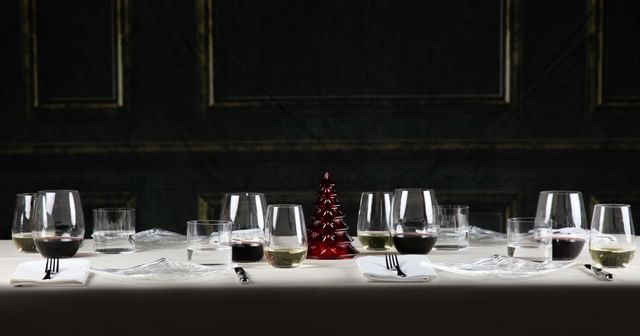
Casual Meals
If you’re preparing an informal lunch or just having some friends over, we recommend going for a balance that combines a properly laid-out table setting with a stripped-down, laid-back feel. Here’s what you’ll need to achieve that:
- First, place your dinner plate in the center of your placemat.
- Next, lay a napkin to the left of your plate and place a dinner fork on top of the napkin.
- Lay your knife to the right of the dinner plate, the blade pointing in, and a spoon to the right of the knife. Take care to ensure that all three utensils align at the bottom.
- Finally, place your water glass slightly above and to the right of your plate, roughly around the area where 1 and 2 o’clock would appear on a clock face.
You may also wish to have a glass of wine or a beer with a casual meal. If this is the case for you, simply place this glass slightly above and to the right of your water glass and you’re good to go!
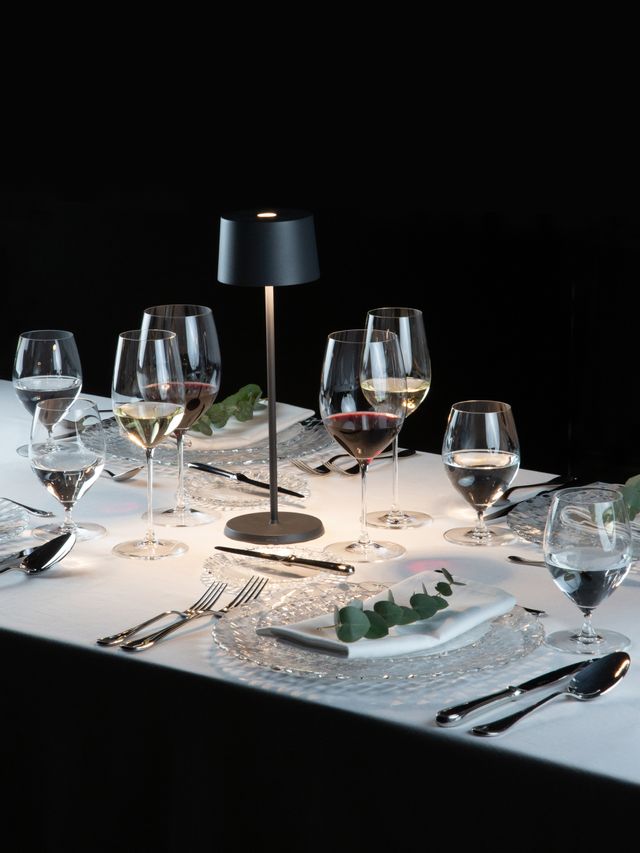
Formal Dinners
Certain components, such as the dish and cutlery you use, will vary depending on the meal being enjoyed, but there are a few constants that apply to any formal dinner. Here's how to get the setup you're after:
- Start with the basics, which are the same as how you’d prepare a casual meal. So plate in the center, fork to the left, knife and spoon to the right, and water glass above and to the right of your plate. We also recommend placing a salad fork to the right of your dinner fork, next to your plate. As with a casual setup, make sure the bottoms of all utensils are level.
- Next, get your bread station set up. Simply place a small bread plate and a butter knife in front and to the left of your main plate, around where 10 and 11 o’clock would appear on a clock face. Lay the bread knife on its side, pointing to the left, with its blade facing the person sitting. Alternatively, you can lay the knife diagonally, pointing towards 10 o’clock on a clock face.
- If you’re enjoying some wine with your meal, place the glass slightly above and to the right of your water glass. If you’re providing red and white wine, place the red wine glass here and the white wine glass slightly below and in from the red wine glass, so that the water glass and two wine glasses form a triangle.
- If dessert is in the cards, lay a dessert spoon sideways, facing your left, directly above your dinner plate. For desserts that call for a fork, place the dessert fork below the dessert spoon, pointing to your right, next to the dinner plate.
- Finally, place your salt and pepper shakers just above your dessert spoon; that should be everything you need for your formal dinner!
So, there you have it - your basic formal dining setup. Here are a few common variations you’re likely to come across at some point:
- When serving soup, replace the standard dinner plate with a soup bowl and a charger plate to place your soup bowl on. The charger plate is important here as it will help your soup retain its heat, catch any spills, and protect your table from any damage from the hot soup bowl.
- When serving fish, place a fish knife to the right of your dinner plate, in between your main knife and soup spoon. Also place a fish fork to the left of your dinner fork, still on top of your napkin.
- If serving a salad as your main meal, you can minimalize the cutlery you use around the dinner plate. A salad fork, placed to the left of the plate is often all you will need for such a meal, though you can also lay a knife to the right of the plate if you wish.
- With most of the meal out of the way, for dessert, you can clear away the wine glasses, bread plate, and most of your cutlery. Place your dessert plate centrally, with a dessert spoon and fork lying sideways above the plate. Keep your water glass above and to the right of the dessert plate, and place your tea/coffee cup and saucer directly to the right of the dessert plate.
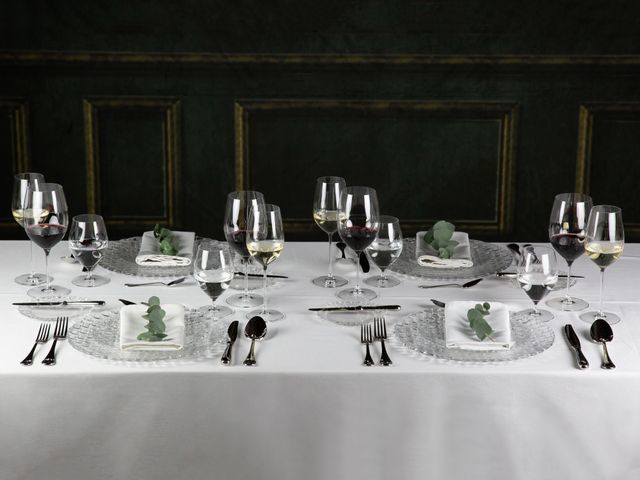
Extra tips to help you create a great dining atmosphere
As well as getting your table setting spot-on, a few extra touches can help you impress your guests even more:
- Manage the light level to match the occasion. Bright light can make people feel more alert, while dim light can help people to relax, and you can use this to match the mood you are trying to create at dinner. If you are preparing a calm evening meal, dimming the lights can help to mellow the mood. Conversely, for a high-energy event, ample lighting can help keep the party mood going!
- Play appropriate background music. As with lighting, the background music you choose should match the vibe you’re going for. Think slow, acoustic tracks for relaxed meals, and fast-paced, energetic songs for livelier affairs.
- Use attractive centerpieces such as flowers. Cutlery and crockery aren’t the only things you can put on your dinner table. A stunning centerpiece like a crystal vase or a stylish candelabra can act as the cherry on the cake to make your table setting look truly enticing to your guests.
Locations
